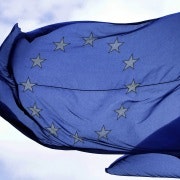Why Draghi needs more 'shock and awe'
It is hard to believe the European Central Bank will not cut interest rates on Thursday. Governing council members came perilously close at their last meeting, in early April. Since then, eurozone unemployment has surged and inflation has tumbled to a three-year low of 1.2 per cent – way below the central bank’s 2 per cent target.
But the ECB is under no illusion that a rate cut will do much good. It knows monetary policy is already too loose for Germany (let’s hope flush German bankers don’t do anything reckless). For much of southern Europe, however, its “transmission mechanism” – the way lower policy rates are conveyed to the real economy – is broken.
Small businesses in Italy are paying interest rates German rivals were paying before Lehman Brothers’ collapse in late 2008 led to central banks slashing interest rates globally – a fact that encapsulates all the weaknesses of banks across the eurozone’s southern periphery.
Against that background, a cut in the ECB’s main policy rate of, say, another quarter percentage point to 0.5 per cent, would be merely about signalling to struggling southern European businesses and consumers that the ECB cares.
Unless he surprises with other, bolder policy measures – for instance, plans to help small businesses directly – it will look an uncharacteristically modest response by Mario Draghi, ECB president. Since his appointment in November 2011 he has not been afraid to use central bank “shock and awe”, first providing unlimited three-year liquidity to banks, and then last summer pledging “whatever it takes” to preserve the eurozone.
While catastrophe has been averted, the ECB feels frustrated. Much repair work is needed on eurozone institutions, banks and economies if growth is to be restored, unemployment cut and the long-term stability of Europe’s monetary union ensured. But, largely as a result of actions by the world’s central banks, including the ECB, financial markets are in a hugely forgiving mood towards eurozone politicians.
Despite all the problems in Rome since February’s inconclusive elections, for example, yields on Italian government bonds, which move inversely with prices, have tumbled. As a new government finally came into view last week, 10-year bond yields fell below 4 per cent for the first time since late 2010. Italian two-year yields are at a record low of 1.1 per cent.
Changes in investors’ behaviour have been striking. When the eurozone crisis was at its most intense, German Bund yields were inversely correlated with Spanish and Italian yields. At moments of stress, there was a rush into Bunds as a safe haven. Since the start of this year, Spanish two-, five- and 10-year bond yields have been positively correlated with German equivalents, according to calculations by HSBC.
More recently, the 60-day rolling correlation between Italian and German yields has also turned positive.
Instead of looking for reasons to sell, investors look for reasons to buy. One important reason is that the ECB has removed ‘re-denomination’ risks – the danger of a eurozone break-up leading to investments being converted into weaker domestic currencies.
Investors are also thinking more positively about fiscal reform; yields have fallen even as governments have moved to soften austerity packages. That would be logical if stronger economic growth resulted, improving long-term debt sustainability. However, it requires giving governments further benefit of the doubt.
Overlaying all the above has been the effect of the Bank of Japan’s recently-launched bond buying program. Eurozone government bond yields have fallen further on expectations of Japanese investors shifting into foreign assets. France has been a particular beneficiary because of its liquid market, and higher yield than German Bunds.
While Draghi is likely to cite tumbling government borrowing costs as a sign that the eurozone is healing, the experience of the past three years is that it takes market pressure to drive eurozone reforms. That has now fizzled. Plans for a stronger eurozone fiscal and banking union were forged when Spanish and Italian yields were around 7 per cent last year. Progress has since slowed considerably.
Markets could snap back. Possible triggers would be a realisation that Japanese investors were staying firmly at home, or actions by credit rating agencies, for instance against Spain, forcing investors to rethink. But it is possible the eurozone is trapped in an extended period of bond market calm.
If so, no prizes for guessing who will come under pressure to think up new “shock and awe” measures to kick the eurozone economy back to growth.
Don’t be shy, Mr Draghi.
Copyright the Financial Times 2013.













